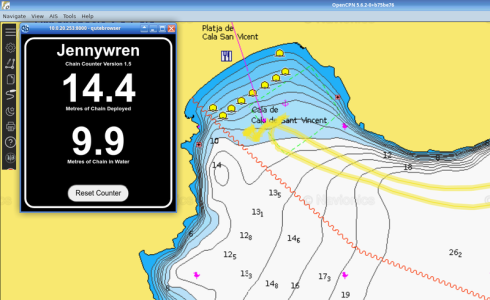markc
Well-known member
Yesterday we were in the Lerin Islands for the day and stayed the night. Wind was forecast to be very light, if any at all. However, at about 9.30pm it became very windy. I don't really know how strong, but it was enough for the wind to keep picking up one of our paddleboards that was floating behind the boat.
For the next couple of hours I kept watch on our position as we were quite close to shore, and for some reason we were yawing a lot. This seemed to induce creeping in the anchor that had been set all day, and we were getting uncomfortably close to a neighbour, so at midnight I moved the boat.
I have never experienced this type of yawing, which did seem quite violent at times, and I'm wondering what caused it and if there was anything I could have done to prevent it. Was it just the type of wind event? Could the other paddleboard which was tied to the rails on deck towards the bow, act like a sail?
FYI, 33kg Rocna anchor, 4m water, 17m of chain out, plus anchor seemed well set when we lifted it to relocate, although we had clearly crept about 20m or so
For the next couple of hours I kept watch on our position as we were quite close to shore, and for some reason we were yawing a lot. This seemed to induce creeping in the anchor that had been set all day, and we were getting uncomfortably close to a neighbour, so at midnight I moved the boat.
I have never experienced this type of yawing, which did seem quite violent at times, and I'm wondering what caused it and if there was anything I could have done to prevent it. Was it just the type of wind event? Could the other paddleboard which was tied to the rails on deck towards the bow, act like a sail?
FYI, 33kg Rocna anchor, 4m water, 17m of chain out, plus anchor seemed well set when we lifted it to relocate, although we had clearly crept about 20m or so

